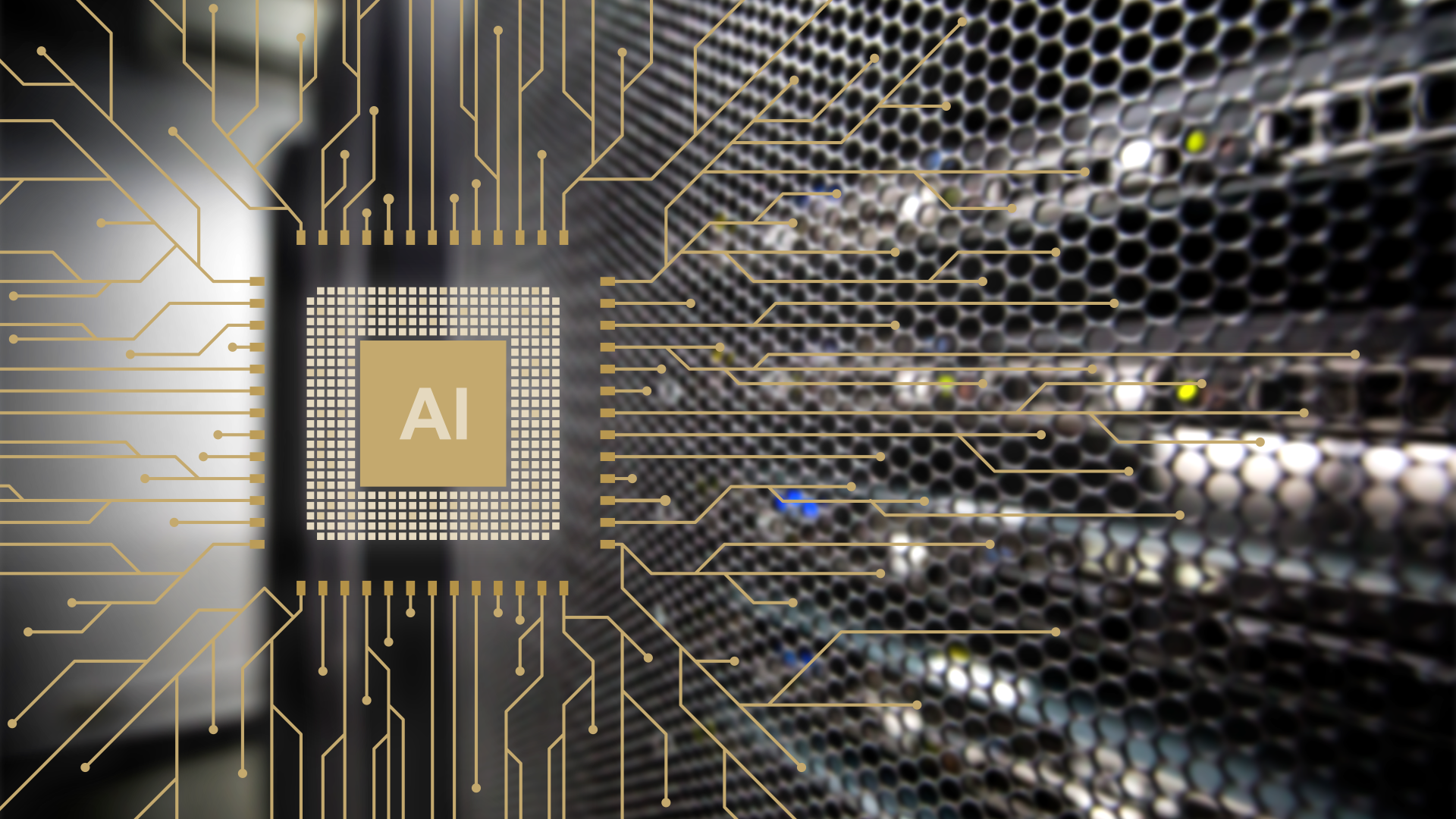
Mitigating Insider Threats: The Power of AI in Corporate Surveillance
In today’s rapidly evolving digital landscape, organizations are increasingly at risk of insider threats. These threats can manifest in many forms, from employees intentionally misappropriating company data to inadvertent mistakes leading to data breaches. As cyberattacks become more sophisticated, businesses need to step up their security measures, and one of the most powerful tools they can leverage is Artificial Intelligence (AI) integrated into corporate surveillance systems. AI is redefining the way businesses protect sensitive information and monitor internal activities, making it an indispensable part of corporate surveillance services. Corey Nydick, Security Sales Manager stated, “In fact, a video surveillance system with AI capabilities can alert managers and owners when someone enters a restricted area that could lead to a breach of data which allows company leadership to mitigate the situation immediately.”
In this article, we will explore the importance of AI in identifying and mitigating insider threats, and how businesses can benefit from advanced surveillance technologies to safeguard corporate data.
What Are Insider Threats in Corporate Security?
Insider threats are security risks posed by individuals who have access to an organization’s internal systems and data. These individuals could be employees, contractors, or business partners with authorized access to sensitive company information. While external cybercriminals often steal data through hacking or malware, insider threats are uniquely challenging because the perpetrators already have trusted access.
There are two primary types of insider threats:
- Malicious insiders: Employees or contractors who intentionally harm the organization by stealing, leaking, or misusing company data.
- Negligent insiders: Well-meaning employees who inadvertently put sensitive information at risk due to careless behavior, such as clicking on phishing emails, mishandling sensitive files, or failing to follow proper security protocols.
While the threat of malicious insiders has long been a concern, negligent insiders are becoming an increasingly significant issue. With many employees working remotely and accessing company systems from various devices, the risk of accidental breaches has multiplied. According to recent studies, insider threats have been responsible for a significant portion of data breaches, underscoring the need for robust surveillance and detection systems. Nydick said, “the negligent acts can include clicking on links contained in an email, sharing files to outside sources and connecting unauthorized devices to the network or VPN with default passwords (which is a common way for hackers to gain access to a network).”
What are insider threats in corporate security?
Insider threats in corporate security refer to risks posed by individuals who have access to an organization’s internal systems, either intentionally or unintentionally causing harm by stealing, leaking, or mishandling sensitive data.
The Role of AI in Corporate Surveillance
Corporate surveillance traditionally focused on monitoring physical access points, such as employee badges or security cameras, to prevent unauthorized access to company premises. However, with the rise of digital workspaces, corporate surveillance has expanded to encompass monitoring digital activities, communications, and data access. AI-powered corporate surveillance is taking this to the next level by offering real-time, intelligent monitoring of both physical and digital environments.
AI technologies can continuously track and analyze employee behavior, system access logs, and communications to detect suspicious activities. Using machine learning (ML) and advanced algorithms, AI can identify patterns of behavior that may indicate potential insider threats before they escalate into full-blown security incidents. Nydick states, “one of the important facts to know about AI, related to corporate security, is that it is always learning from new actions which allows the AI devices to stay a step ahead of the ill-intended individual.”
Key Benefits of AI-Powered Corporate Surveillance
- Proactive Threat Detection: One of the most significant advantages of AI in corporate surveillance is its ability to detect insider threats proactively. AI systems can learn and analyze normal user behaviors, such as which files employees typically access, who they communicate with, and when they log in and out of systems. By understanding these baseline behaviors, AI can quickly spot deviations, such as an employee accessing files they don’t usually work with or attempting to export sensitive data to an unapproved device. This early detection allows businesses to take preventive measures before a serious data breach occurs.
- Real-Time Monitoring and Response: Unlike traditional surveillance systems that may require human intervention to spot anomalies, AI systems can continuously monitor activities 24/7 and generate alerts when suspicious behaviors are detected. In real time, AI can analyze large volumes of data and flag potentially harmful actions. For example, if an employee attempts to access a restricted area of the network or sends confidential documents to unauthorized individuals, AI-powered surveillance systems can immediately alert security teams, allowing them to respond quickly and mitigate potential threats.
- Precision and Accuracy: Human monitoring of corporate surveillance footage or system logs can often lead to errors or overlooked threats. AI, on the other hand, excels at analyzing vast amounts of data with high precision and speed. Whether it’s reviewing thousands of log-in attempts or scrutinizing hours of video footage, AI can quickly identify patterns or anomalies that might indicate malicious or negligent behavior. The precision of AI in corporate surveillance ensures that security teams can focus on addressing real threats rather than sifting through false alarms or irrelevant data.
- Continuous Improvement: AI’s machine learning capabilities allow systems to learn from past incidents and continuously improve over time. As the system encounters new threats or unexpected behavior patterns, it can adapt and fine-tune its detection models. This ongoing learning process helps businesses stay ahead of emerging risks and evolve their surveillance systems in response to new insider threat tactics.
- Comprehensive Data Security: With AI-driven surveillance, businesses can secure both physical and digital assets. In addition to monitoring network traffic and access to sensitive files, AI can track employee movements within the physical premises through smart cameras and badge systems. Integrating AI with corporate surveillance services provides an added layer of protection for both digital data and physical assets, ensuring a holistic approach to security.

How Does AI Identify Insider Risks?
AI’s role in identifying insider risks revolves around its ability to analyze user behavior patterns, detect anomalies, and predict potential threats before they materialize. Here’s a closer look at how AI helps identify insider risks:
- Behavioral Analysis: AI can monitor and analyze employee behavior in real-time, including log-in times, network activity, file access, and communication patterns. By comparing current activities with established norms, AI can quickly spot deviations that may indicate malicious or negligent actions. For example, if an employee typically accesses specific client data but suddenly begins downloading a large amount of sensitive company data without any relevant work reason, AI will flag this as suspicious.
- Predictive Analytics: AI-powered corporate surveillance services use predictive analytics to forecast potential insider threats. By analyzing historical data, AI can identify early indicators of malicious intent or risk factors associated with negligent behavior. For instance, AI may spot employees who frequently share sensitive documents with third parties or exhibit behavior linked to high turnover risk—both of which can signal potential insider threats.
- Contextual Awareness: AI systems can analyze activities within the context of an employee’s role, location, and time. This allows for more nuanced detection of insider risks. For example, AI might flag an employee accessing a confidential report outside of working hours, which may not raise red flags if it’s within normal working hours but becomes suspicious if it deviates from the individual’s usual pattern.
- Data Loss Prevention: AI can monitor for potential data exfiltration attempts. This includes identifying if sensitive data is being transferred to unauthorized devices, copied to external storage, or shared with unapproved individuals. Such behaviors could be signs of an employee attempting to steal data or leak it to competitors. AI can flag these incidents and alert security teams immediately.
How does AI identify insider risks?
AI identifies insider risks through behavioral analysis, predictive analytics, and contextual awareness. It can track employee behavior, spot anomalies in data access, and predict potential threats based on historical patterns and context.
Can Surveillance Prevent Internal Data Leaks?
Surveillance plays a critical role in preventing internal data leaks, especially when combined with AI. Internal data leaks, whether intentional or accidental, can have catastrophic consequences for an organization, including financial loss, reputation damage, and legal repercussions.
AI-powered corporate surveillance systems can prevent data leaks by continuously monitoring all activities related to sensitive information. When an employee attempts to access or share data inappropriately, AI can intervene by triggering alerts, blocking the action, or notifying the security team in real time.
For example, AI systems integrated with Data Loss Prevention (DLP) technologies can prevent unauthorized access to confidential information by monitoring file transfers, email communications, and web activity. AI can also be programmed to identify and block suspicious behaviors, such as accessing files that are unrelated to an employee’s role or attempting to share sensitive information with unauthorized individuals or external platforms.
Can surveillance prevent internal data leaks?
Yes, AI-powered surveillance can prevent internal data leaks by monitoring data access and transfer activities. AI can detect unauthorized actions, block them, and alert security teams, preventing potential leaks before they happen.
What AI Tools Help in Insider Threat Detection?
There are several AI tools and technologies specifically designed to help businesses detect and mitigate insider threats. These tools use various machine learning and behavioral analytics algorithms to analyze large volumes of data and identify potential risks in real-time. Some of the most effective tools include:
- User Behavior Analytics (UBA): This tool tracks user behavior patterns to identify deviations from normal actions. UBA systems analyze login activity, file access, email communication, and other data to detect signs of malicious or negligent activity.
- Data Loss Prevention (DLP): DLP tools monitor data transfers and communications to ensure that sensitive information is not being leaked or shared without authorization. AI-enhanced DLP tools can flag suspicious data movement, such as sending confidential information to an external device or platform.
- Network Traffic Analysis (NTA): NTA tools monitor the flow of data within a company’s network, identifying unusual traffic patterns that could indicate a data breach or insider threat.
- Endpoint Detection and Response (EDR): EDR tools monitor endpoint devices (laptops, desktops, mobile devices) for unusual activity, such as downloading excessive amounts of data or accessing unauthorized files.
What AI tools help in insider threat detection?
AI tools such as User Behavior Analytics (UBA), Data Loss Prevention (DLP), Network Traffic Analysis (NTA), and Endpoint Detection and Response (EDR) are commonly used to detect and mitigate insider threats.
Is Corporate Surveillance Ethical?
As AI becomes more integral to corporate surveillance, ethical concerns inevitably arise. Some employees may feel uncomfortable with constant monitoring, fearing that their privacy is being invaded. It’s important for businesses to strike a balance between protecting corporate assets and respecting employee privacy.
Here are some ethical considerations to keep in mind:
- Transparency: Organizations should be transparent with employees about the surveillance systems in place. Clearly communicating the purpose of surveillance (e.g., to protect company data) and how AI will be used ensures that employees understand the value of the systems without feeling unjustly monitored.
- Data Minimization: AI surveillance systems should collect only the data necessary to monitor insider threats effectively. Limiting the scope of surveillance can help mitigate concerns about privacy and prevent unnecessary data collection.
- Consent: In some regions, businesses may be required to obtain employee consent before implementing certain surveillance measures. Organizations should ensure compliance with data protection laws, such as the GDPR, and work to maintain a balance between security and employee rights.
- Fairness: AI algorithms must be designed to avoid discrimination or bias. Ensuring fairness in the deployment of AI-driven surveillance systems is essential to prevent the misuse of surveillance data and protect employee trust.
Is corporate surveillance ethical?
Corporate surveillance can be ethical if businesses are transparent with employees, respect privacy, collect only necessary data, and comply with applicable laws. Ensuring fairness and protecting employee rights are key to maintaining ethical surveillance practices.
Conclusion
AI is transforming the landscape of corporate surveillance by offering advanced capabilities for detecting and mitigating insider threats. By leveraging AI’s ability to analyze behaviors, predict risks, and provide real-time monitoring, businesses can proactively safeguard their sensitive data and protect themselves from internal security breaches.
As the threat landscape continues to evolve, the importance of AI in corporate surveillance will only grow. Businesses that invest in AI-driven surveillance services are positioning themselves to not only protect their assets but also enhance overall security in the face of emerging threats. AI’s precision, adaptability, and predictive capabilities make it an invaluable tool in the ongoing fight against insider risks.
Discover how AI safeguards corporate data! Explore our comprehensive corporate surveillance services to learn more about how AI can strengthen your organization’s security posture.

